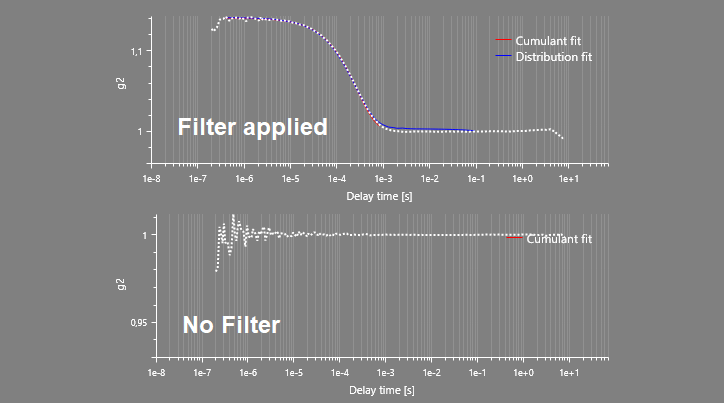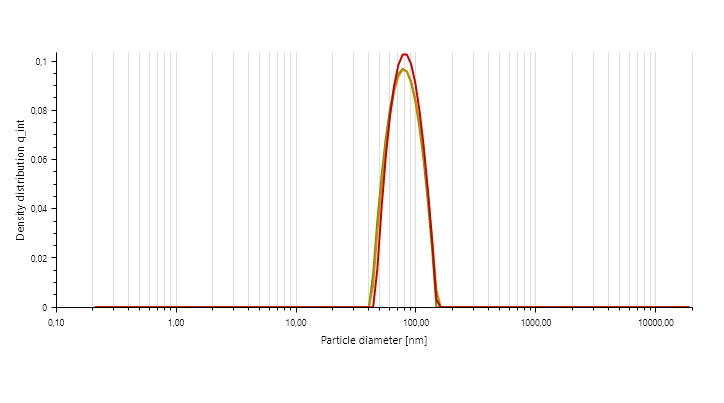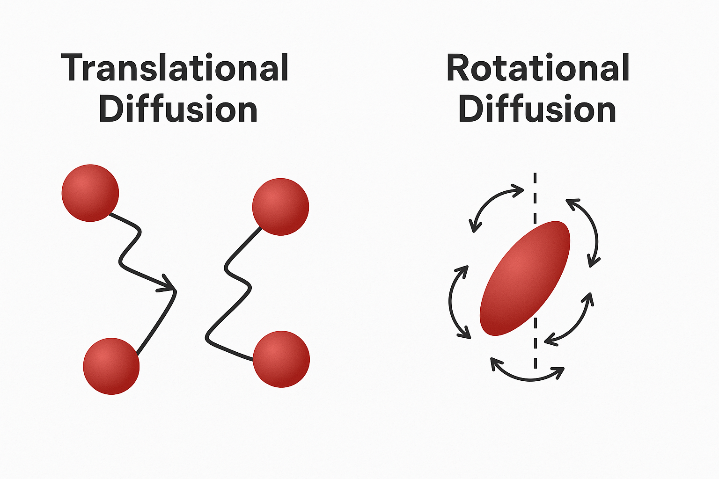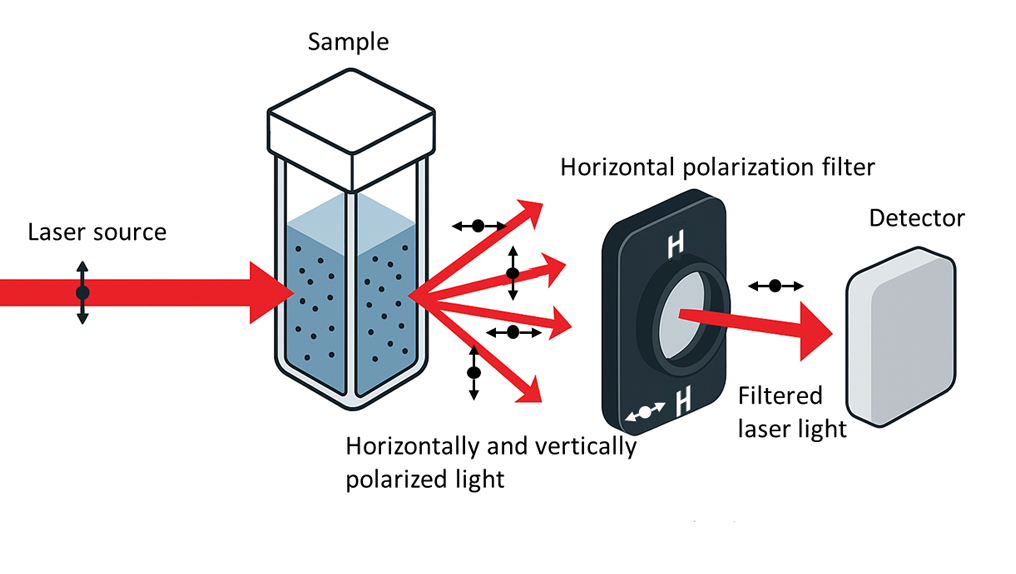Understanding Fluorescence and Polarization Filters in Dynamic Light Scattering (DLS)
Dynamic light scattering (DLS) has become an indispensable analytical technique for determining the size and motion of particles in suspension via analysis of their light-scattering behavior, serving researchers across industries from pharmaceuticals to nanotechnology. To enable precise measurements, enhance signal quality, and investigate particular materials, optical filters – particularly fluorescence filters and vertical or horizontal polarization filters – can be strategically employed in DLS systems. These sophisticated optical components refine and dramatically improve the detected signal, allowing researchers to accurately isolate scattered light from the particles under investigation, ultimately providing reliable particle size data and enabling the study of complex particle properties that would otherwise remain hidden.
Modern DLS instruments have evolved to incorporate advanced optical filtering capabilities that address the challenges posed by complex sample matrices. While traditional DLS systems may offer limited filtering options, cutting-edge instruments like the Litesizer DLS series distinguish themselves by providing fluorescence and polarization filters that can be applied across all detection angles – forward-, side-, and backscattering – rather than being restricted to a single detection angle. This comprehensive filtering capability enables researchers to perform sophisticated analyses that would be impossible with conventional instruments, including particle concentration determination of fluorescent samples such as quantum dots.
Fluorescence filters: Eliminating spectral interference
Fluorescence filters play a crucial role in improving the accuracy of dynamic light scattering measurements, particularly when working with samples that exhibit natural fluorescence. Some biological or chemical samples (e.g., quantum dots, fluorescently labeled nanoparticles, and even certain contaminants) can emit fluorescent light when exposed to the laser source used in DLS. This emitted light occurs at longer wavelengths than the incident laser and can interfere with the detection of elastically scattered light, which is essential for analyzing particle size via DLS.
The fundamental challenge with fluorescent samples lies in the incoherent nature of emitted fluorescent light. Unlike the coherently scattered laser light that forms the basis of DLS measurements, fluorescent emissions occur at random times following excitation, contributing only noise to the correlation function. This fluorescence-induced noise can completely overwhelm the desired scattering signal, particularly when dealing with strongly fluorescent materials such as quantum dots used in display technologies or fluorescently labeled biological molecules.
Fluorescence filters are specifically designed to block these fluorescing emissions, allowing only the Rayleigh-scattered light to reach the detector (Figure 1). By removing this background fluorescence, the filters enhance signal clarity and ensure that the detected light more accurately reflects the motion and size of the particles in suspension.
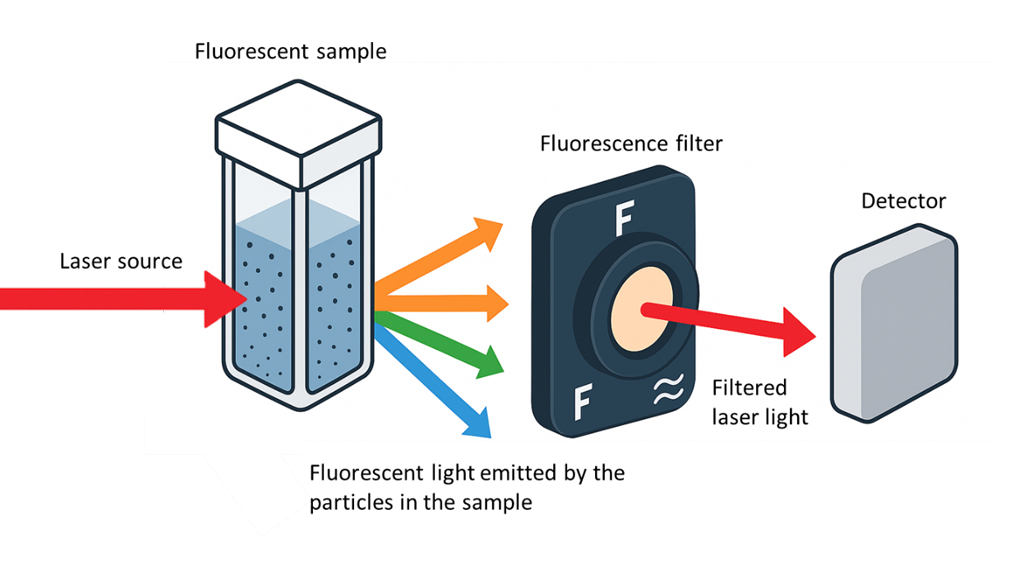
To enhance DLS measurements of antibody samples labeled with bright fluorophores in the deep- or far-red spectral range, a fluorescence filter was used to improve the measurements. Antibodies are inherently weak scatterers, and when coupled to highly fluorescent dyes, the emitted light can easily overpower the scattering signal, even when using filters. Sufficient filtering of a part of the fluorescence light allowed enough scattered light to reach the detector for determination of a meaningful count rate – permitting successful size measurements of labeled particles.
Figure 2 demonstrates the dramatic impact of fluorescence filtering through a direct comparison of correlation functions obtained from DLS measurements of 60 nm polystyrene latex beads mixed with far-red-fluorescent antibodies. The lower panel, representing measurements without a fluorescence filter, shows a correlation function dominated by fluorescent background noise, resulting in poor signal quality and unreliable data that would lead to erroneous particle size distributions. In stark contrast, the upper panel shows the same sample measured with a fluorescence filter applied, revealing a significantly improved correlation function quality that enables accurate and reliable particle size analysis. This improvement is quantitatively demonstrated in Figure 3, which shows the resulting particle size distribution with excellent reproducibility across three consecutive measurements.
Polarization filters: Managing light polarization states
DLS typically uses vertically polarized laser light to illuminate the sample. After scattering, the light can remain polarized or become depolarized depending on the properties of the particles. However, depolarized light interferes with measurement quality, leading to inaccurate measurement results. Therefore, the use of a polarization filter can significantly improve data reliability.
Vertical polarization filter: Noise reduction and signal enhancement
A vertical polarization filter is chosen for samples that cause depolarization, which introduces noise into the correlation function. For such cases, a vertical polarization filter blocks the depolarized light and allows only the light with the same polarization as the laser source to reach the detector, as shown in Figure 4.
Vertical polarization filters are especially valuable for different measurement scenarios that commonly occur in research and industrial applications:
- DLS measurements of optically active materials that rotate polarization, including sucrose solutions, amino acids and proteins, quartz samples, and chiral compounds in solution
- Measurements performed in cuvettes that can cause a flare or unwanted reflections, particularly when using plastic cuvettes that may depolarize light
- Analysis of weak scatterers, such as protein samples, where signal-to-noise ratio optimization is critical
- Studies of birefringent materials that inherently change the polarization of light, including crystalline solids and liquid crystals
The decision to employ vertical polarization filtering should be based on sample characteristics and measurement conditions. For isotropic, optically inactive samples that do not exhibit significant depolarization effects (such as monodisperse spherical nanoparticles suspended in a simple, non-interacting solvent) polarization filtering may offer limited benefit. In these ideal conditions, where the scattering signal is inherently strong and the signal-to-noise ratio is naturally high, detecting all scattered light without polarization filtering can yield slightly higher overall signal intensity without compromising data quality. However, for complex samples or challenging measurement conditions, vertical polarization filtering becomes essential for obtaining reliable results.
Horizontal polarization filter: Probing particle anisotropy
Horizontal polarization filters play a crucial role in dynamic light scattering (DLS), particularly in complex or demanding measurement conditions. These filters significantly enhance the sensitivity of DLS to anisotropic or non-spherical particles, which tend to depolarize incident light due to their asymmetric shape and rotational motion.
To fully appreciate the value of horizontal polarization filtering, it is essential to understand the two fundamental types of particle motion in solution (Figure 5). Translational diffusion refers to the random movement of particles through a fluid as they change position over time due to thermal energy. In dynamic light scattering (DLS), this motion causes fluctuations in scattered light intensity, which are analyzed using sophisticated algorithms to determine particle size.
Rotational diffusion, in contrast, describes the random reorientation of particles around their axes. This rotational motion is particularly relevant for anisotropic (non-spherical) particles, whose rotation affects the polarization state of scattered light and can provide valuable insights into particle shape and structural dynamics.
While conventional DLS relies primarily on translational diffusion to determine particle size, rotational diffusion can alter the polarization state of the scattered light and introduce artifacts in the measured signal, potentially leading to inaccurate size estimations if not properly accounted for.
By selectively detecting the depolarized, horizontally polarized component of the scattered light, researchers can isolate the effects of rotational diffusion and gain additional insights into particle shape – information that standard DLS configurations typically overlook. This capability transforms DLS from a simple particle sizing technique into a more comprehensive analytical tool capable of providing shape-related information.
Horizontal polarization filters enable the detection of depolarized scattered light, which occurs when light interacts with anisotropic particles. The working principle is shown in Figure 6. This unique capability allows researchers to assess rotational diffusion and particle shape, providing insights that extend beyond what is possible with standard DLS, which focuses solely on translational diffusion. The combination of translational and rotational diffusion analysis represents a significant advancement in particle characterization capabilities.
Technological advantages with Litesizer DLS
The implementation of optical filtering in DLS systems varies significantly among different instruments and manufacturers. Advanced DLS systems, such as the state-of-the-art Litesizer DLS series, offer unprecedented flexibility in filter application. Unlike conventional instruments, which may limit filter use to specific detection angles, the Litesizer DLS 701 and Litesizer DLS 501 are uniquely designed to accommodate both fluorescence and polarization filters across all three detection angles: 15°, 90°, and 175°.
This comprehensive filtering capability enables several advanced analytical approaches that are not possible with comparable instruments:
- Multi-angle particle sizing (MAPS) with applied filters for enhanced resolution of complex samples
- Particle concentration analysis of challenging samples such as quantum dots
- Single-angle or multi-angle analysis with selective filter application based on sample requirements
- Comprehensive characterization of anisotropic particles across multiple scattering angles
The ability to apply filters at all detection angles represents a significant technological advancement, as it allows researchers to optimize their measurement strategy based on specific sample characteristics while maintaining the full analytical capabilities of modern DLS systems.
Summary
DLS is a widely used technique for determining particle size and motion in suspension by analyzing fluctuations in scattered light intensity. To improve measurement quality and adapt the technique to a broader range of samples, optical filters such as fluorescence filters and polarization filters are integrated into DLS setups.
Fluorescence filters have proven particularly valuable for samples exhibiting intrinsic fluorescence, such as quantum dots, fluorescently labeled molecules, and other materials that emit light when excited by the DLS laser. These samples can emit light at longer wavelengths when excited by the DLS laser, thereby interfering with the detection of elastically scattered light essential for accurate particle size analysis. Fluorescence filters effectively block this background emission, allowing only the coherent scattered light to reach the detector and enabling reliable measurements of even strongly fluorescent materials.
Polarization filters further refine the DLS signal by managing the polarization state of scattered light. Vertically polarized filters are used to suppress depolarized components that introduce noise into the correlation function. They are particularly effective in samples involving optically active or birefringent materials, such as chiral compounds, proteins, and crystalline solids, or in configurations where reflections from cuvette walls can impair data quality.
Horizontal polarization filters are indispensable in studies involving anisotropic or non-spherical particles. These filters selectively detect the horizontally polarized (depolarized) component of scattered light, which carries information about rotational diffusion. While DLS traditionally analyzes translational diffusion to determine particle size, rotational diffusion, resulting from random particle reorientation, can alter the polarization of scattered light and affect size accuracy. By isolating this depolarized signal, horizontal polarization filters enable researchers to probe particle shape and rotational behavior, extending the analytical capability of DLS beyond conventional size analysis.
The integration of advanced optical filtering capabilities in modern DLS instruments represents a significant evolution in particle characterization technology. Instruments that offer comprehensive filtering options across multiple detection angles provide researchers with unprecedented analytical flexibility, enabling measurements that would be impossible with conventional systems. As particle characterization requirements become increasingly sophisticated, the ability to selectively apply fluorescence and polarization filters across all detection angles ensures that DLS remains a powerful and versatile analytical technique capable of addressing the most challenging measurement scenarios.
